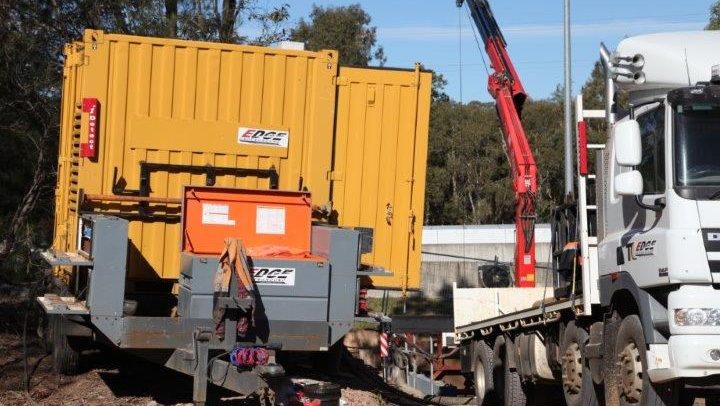Microtunnnelling is a pinpoint method of installing a pipe. Most microtunnelling contractors are aiming for a result which would see a pipe installed +/-10 of design line and grade. However the accuracy of this line can be greatly affected by an accumulation of tolerance errors – sometimes referred to as tolerance stack.
Any microtunnelling installation begins with a survey of the installation. The setup requires three ingredients: line, invert and grade. First, let’s look at the line. One of the benefits of microtunnelling is the ‘keyhole factor’. Essentially microtunneling is a keyhole pipeline in that the pipe is installed via a small vertical shaft that is then microtunnelled to a second vertical shaft, leaving everything in between undisturbed. The issue with small shafts is the line for the installation is required to be extremely accurate for the set up in that small shaft.
For example, if we were to look at a 4m internal diameter shaft. By the time you allow 500mm to set up your instrument (laser or theodolite/station) we are left with less than 3.5m to establish a perfect line. If there is any error in the establishment of the line the error will then be multiplied out over the length of the line, with the error only being realised on the breakthrough at the reception shaft.
Next, the invert starting point really should be a given, however, with the depth of these installations, transferring the level down can present issues in itself. There may be a requirement to transfer levels, staff on only vertical angles and TBMs with incorrect values, all in combination can result in differing magnitudes of error.
Finally, the grade on the line. This is just a matter of punching in some numbers. All instruments are different and so the number of decimal points may differ, which can create confusion. The differentiation between +/- can be difficult to identify. The chainage of the shaft may have moved with no allowance being made.
All of these issues now combine with the instrument itself – is it in calibration? Has it been set up to level or is it on a roll? what is the manufacturers specification of error over distance? What are the atmospheric conditions present and how will that affect the accuracy of the instrument?
Now keep in mind, all of these areas of potential error are before the actual installation process begins.
During an installation, microtunnellers are managing the machine through a variety of ground conditions – soft/hard, sticky/flowing, dry/wet, highly abrasive/highly elastic – all of which is constantly changing and affecting the way we drill. All of these factors affect our ability to steer in the ground and remove the ground, not to mention the fluids to be utilised and the wear on the bit. The ground conditions will also affect the amount of overcut on the pipe required. Overcut in itself is an opportunity for error. it allows the pipe to move within the ground, however it is critical to allow steering and reduce skin friction. Are my thrust pressures rising? Am I moving the machine or the shaft? Has my instrument moved? These questions all need to be considered.
Once the installation is complete, there are still opportunities for error – was it an encasement pipe? Is there a need to insert the carrier pipe to grade inside this pipe? Will it be centralised and grouted? Are the centralisers a neat fit? What is the grout mix and will it flow consistently?
Are the pipe(s) accurate? What tolerance is there on the manufacture of the pipe? Is the pipe rigid or flexible?
This is without taking into account machinery issues, which are inevitable as we work in a destructive environment.
Taking all factors into account I believe the microtunneller out there, typically covered in mud or grease, does an amazing job consistently delivering precision pipelines. I encourage everyone to consider what they are dealing with. See through the mud!

